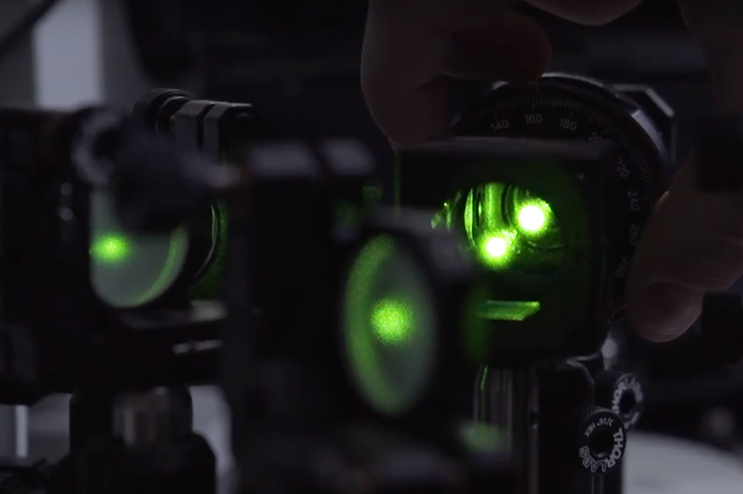UMD Bioengineers’ Brillouin Microscopy Among The Guardian’s Top 10 Science Stories for 2022
Research put forth by University of Maryland bioengineering associate professor Giuliano Scarcelli and his collaborators was named one of The Guardian’s 10 biggest science stories of 2022. The UK-based global news organization highlighted the Scarcelli lab’s latest breakthroughs in Brillouin microscopy, a nondestructive and nondisruptive method for observing cells and measuring their mechanical functions using light. Scarcelli’s microscopy applications can be used to advance understanding of how the mechanical properties of cells change in the course of aging, injury healing, and disease pathogenesis. Over the last two decades, scientists have recognized that mechanical functions within cells play important roles in making cells work, but current methods used to observe a cell’s mechanical functions have many limitations that inhibit our ability to understand what those roles are. Today, the only way to observe a cell and measure its mechanical properties is to freeze, dry, or kill it, or to make contact with the cells. But, these methods disrupt the cell’s functionality and, in some cases, destroy the cell, making it difficult to accurately measure and observe the mechanical functions in cells. In order to shed new light on how diseases develop, researchers need to get a clearer look at how the properties of a cell change over time. Years ago, Scarcelli and his collaborators set out to tackle this challenge by using Brillouin light scattering, a process that occurs when light interacts with density fluctuations in a medium. When light hits an object – such as a cell or biological tissue – it changes color, or wavelength. This change in color can provide key information about the mechanical properties of the object the light hit. To take things further, Scarcelli and his team developed a high-resolution confocal microscope based on Brillouin scattering, which allows researchers to quickly map a cell's mechanical properties – all without interfering with the cell’s function. "Brillouin scattering was discovered 100 years ago, and has been used in material science for characterizations for over 50 years. But now, we can finally apply Brillouin scattering quickly enough – and gently enough – that we can unleash its potential in biological research and clinical medicine,” Scarcelli said. “This method will provide a powerful tool for early diagnosis of diseases such as cancer, atherosclerosis, and Alzheimer’s,” said University College London Professor of Developmental Biophysics Yanlan Mao in The Guardian piece. “It will also revolutionize how scientists can measure and track the mechanical changes of our cells during normal development, and critically improve our understanding of the importance of mechanical forces in biology.”
Full text of The Guardian article, “The 10 biggest science stories of 2022 – chosen by scientists,” can be accessed online.
Related Articles: December 20, 2022 Prev Next |



 Scarcelli and his team’s most recent research demonstrates the utility of Brillouin microscopy in characterizing cancer cell mechanical properties as they metastasize, or break away from the primary cancer site to other parts of the body. The group’s cancer application is part of an ongoing collaboration between Scarcelli’s lab and National Institutes of Health (NIH) National Cancer Institute (NCI) Laboratory of Cell Biology senior investigator
Scarcelli and his team’s most recent research demonstrates the utility of Brillouin microscopy in characterizing cancer cell mechanical properties as they metastasize, or break away from the primary cancer site to other parts of the body. The group’s cancer application is part of an ongoing collaboration between Scarcelli’s lab and National Institutes of Health (NIH) National Cancer Institute (NCI) Laboratory of Cell Biology senior investigator